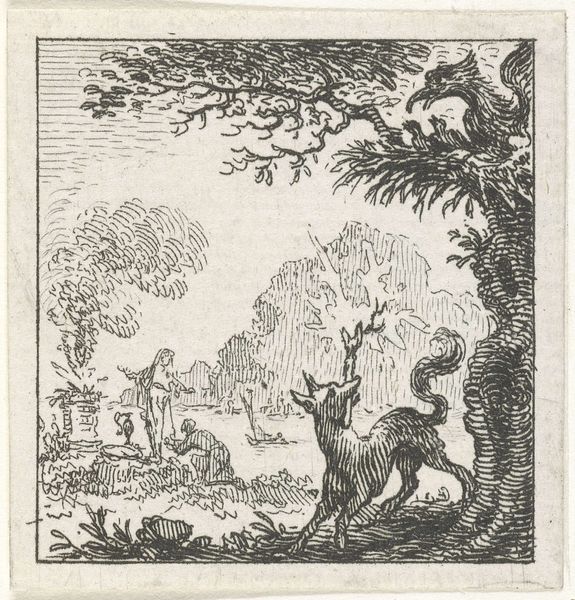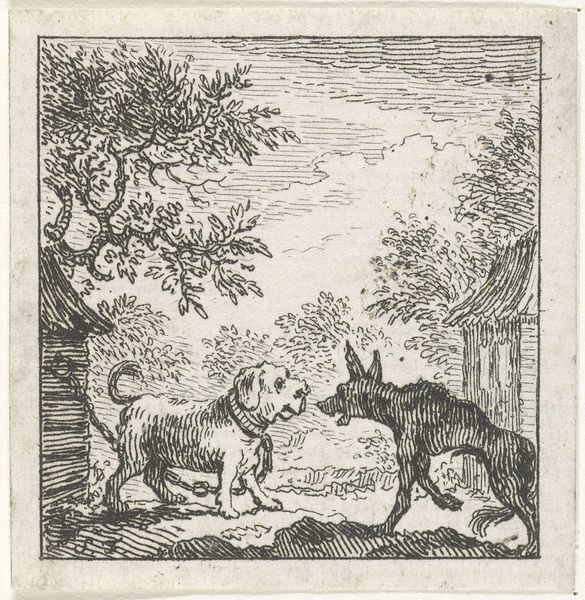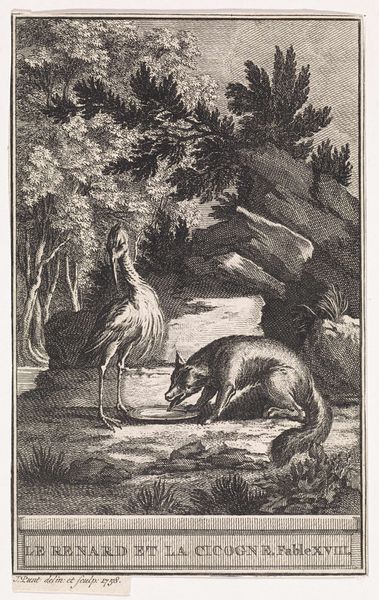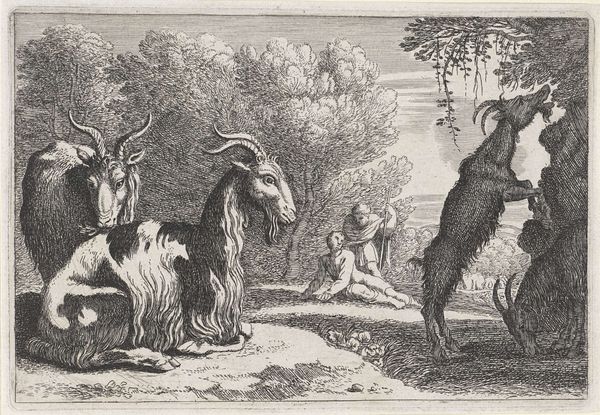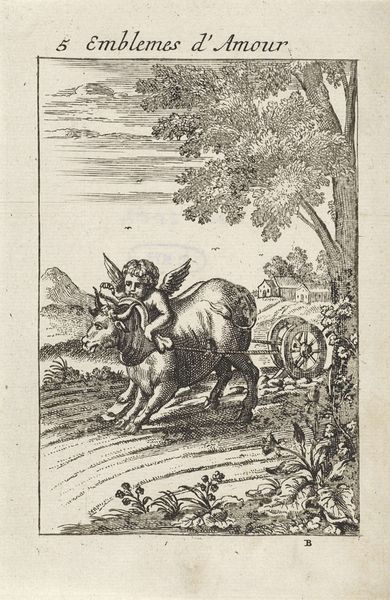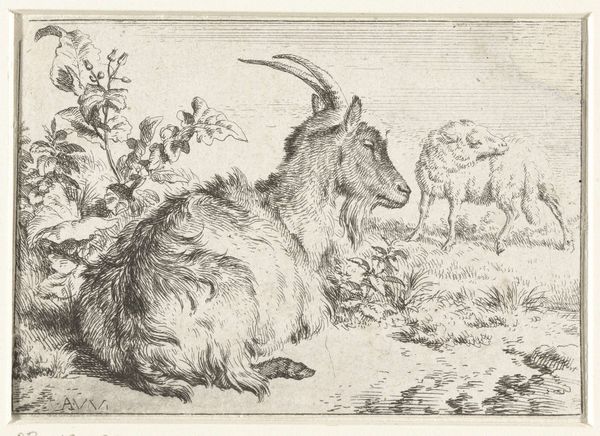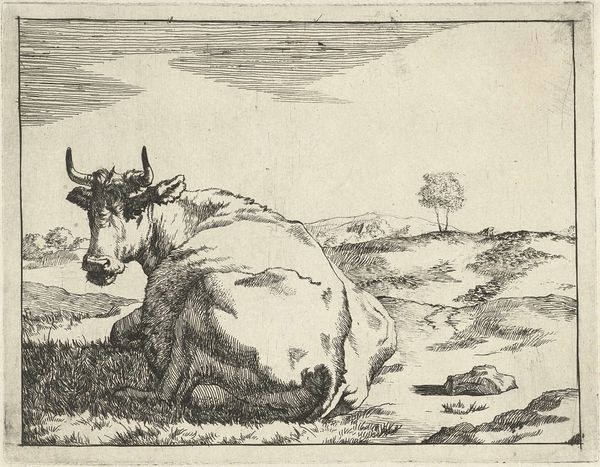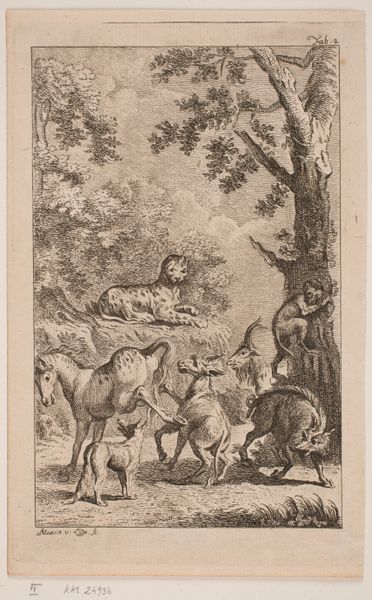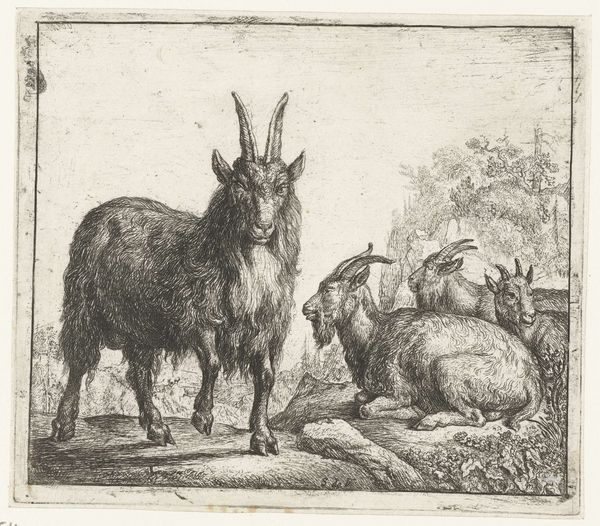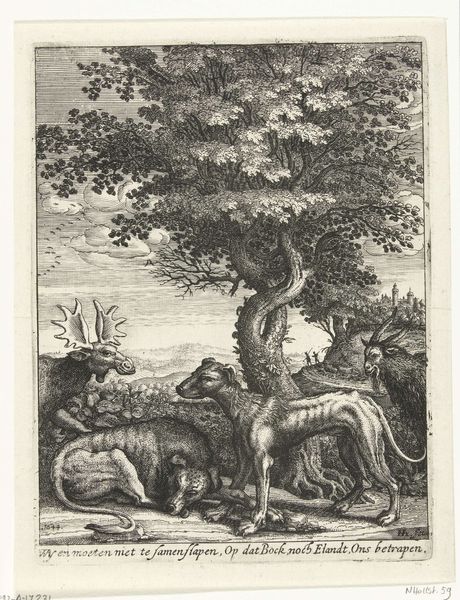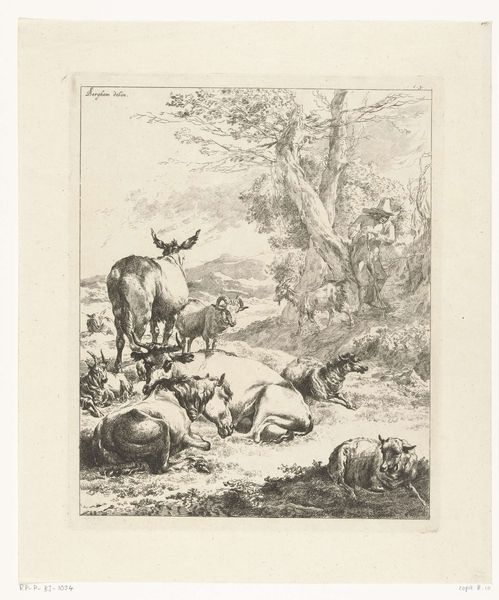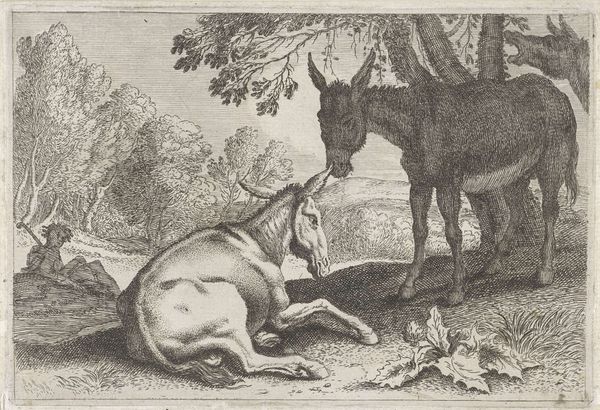
Dimensions: height 44 mm, width 41 mm
Copyright: Rijks Museum: Open Domain
Curator: "Fabel van de ezel en het wild zwijn," or "Fable of the Donkey and the Wild Boar," created in 1769 by Simon Fokke. The piece is currently held here at the Rijksmuseum. Editor: There’s a stark simplicity to this piece, wouldn't you say? Just pen, ink, and paper bringing to life this curious woodland meeting. There's an odd tension, almost comedic, about the whole thing. Curator: Fokke worked extensively as an etcher and draughtsman for book illustrations; in that world, he understood the power and possibilities held in line work. Note the details achieved with the pen--the rendering of foliage or musculature feels deceptively effortless. Editor: It certainly masks labor, doesn't it? These seemingly simple etchings belie the technical mastery required to consistently and reliably produce prints at scale for mass consumption. These fables circulated to far more eyes than some oil painting stuck in a rich man’s parlor. Curator: Indeed, a far wider distribution and different engagement with the "fine art" object, per se. But returning to the piece itself--what does the exchange between animals convey to you? Is it confrontation? Recognition? Editor: There’s a standoff for sure; each subject is turned away in its own way--the donkey's back is fully to the viewer, the boar is angled just enough to flaunt its bristled hide. It reminds me of something by Hogarth, critiquing class perhaps, disguised as animal allegory for easier digestion by the elites? Curator: An astute reading, certainly. Though I sense Fokke aimed less at class and more at human foibles in general--the stubbornness of the donkey mirroring our own inflexibility, perhaps. Or the wild boar representing untamed appetites or passions. I feel his hand enjoys depicting their almost caricature-like figures. Editor: And it’s no accident these are barnyard or woodland creatures. Even materials speak—the modest ink and paper is democracy in action, available and relatively easy to disseminate throughout the community. It is designed to engage everyday consumers within a specific social stratum. Curator: A welcome reminder of the intersectionality of our readings, the multiple levels upon which art, especially art of narrative, can impact. Thank you, as always, for shedding such insightful perspective! Editor: Likewise, truly, a pleasure to peel back layers. Thank you.
Comments
No comments
Be the first to comment and join the conversation on the ultimate creative platform.
